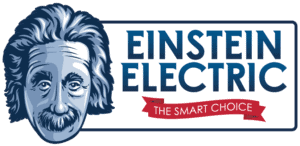Solar power is not just an eco-friendly energy source; it’s also a smart financial investment. By harnessing the power of the sun, you can generate clean electricity and reduce your energy bills while potentially earning a return on your investment. In this comprehensive guide, we’ll explore the factors that influence the return on investment (ROI) of solar power systems.
Factors Influencing Solar Power ROI
When evaluating the ROI of solar power, several factors come into play. Let’s break down these considerations into specific factors:
1. Solar Panel Quality
The quality of the solar panels you choose significantly affects your ROI.
- Panel Efficiency: Higher efficiency panels generate more electricity from the same amount of sunlight.
- Durability: Choose panels with a long lifespan and robust warranties.
2. Solar Panel Location
The geographical location of your solar panels plays a crucial role in their performance.
- Sunlight Availability: Areas with more sunlight generally yield better results.
- Shading: Minimize shading from nearby buildings or trees to optimize panel efficiency.
3. System Size
Determining the right system size for your energy needs is essential.
- Energy Consumption: Analyze your historical energy consumption to size your system accurately.
- Future Needs: Consider any potential increases in energy consumption, such as electric vehicle charging.
4. Installation Costs
The initial installation costs impact your ROI calculation.
- Quotes and Estimates: Obtain quotes from reputable solar installation companies.
- Financing Options: Explore financing to make installation costs more manageable.
5. Solar Incentives
Government incentives and rebates can significantly reduce upfront costs.
- Federal Tax Credits: Check for federal tax credits for solar installations.
- State and Local Incentives: Investigate regional incentives, such as rebates and grants.
6. Energy Storage
Integrating energy storage solutions like batteries can enhance ROI.
- Energy Independence: Store excess solar energy for use during non-sunny hours, reducing reliance on the grid.
- Backup Power: Enjoy backup power during outages with energy storage.
7. Net Metering
Understand your local net metering policies, which determine how excess electricity is credited or compensated.
- Credit Rates: Know the rates at which excess energy is credited to your account or compensated.
- Net Metering Availability: Check if your utility offers net metering or similar programs.
8. Electricity Rates
Evaluate local electricity rates and their expected trends.
- Current Rates: Assess current rates to calculate potential savings.
- Rate Trends: Understand how rates may change in the future.
9. Energy Savings
Consider the energy savings generated by your solar power system.
- Monthly Savings: Calculate monthly energy bill reductions to determine immediate benefits.
- Long-Term Savings: Think about the long-term savings over the life of the system.
10. Return on Investment (ROI)
Calculate the expected ROI based on installation costs and energy savings.
- Payback Period: Determine when your energy savings will recoup your initial investment.
- Long-Term Returns: Analyze the potential returns over the life of the solar system.
11. Environmental Impact
Assess the environmental benefits of solar power.
- Reduced Emissions: Solar power reduces greenhouse gas emissions, contributing to a cleaner environment.
- Sustainability: Investing in solar aligns with sustainability goals and reduces reliance on fossil fuels.
12. Panel Warranty
Consider the warranty provided with your solar panels.
- Performance Warranty: Ensure the panels come with a reliable performance warranty.
- Longevity: High-quality panels often have warranties covering 25 years or more.
13. System Monitoring
Real-time system monitoring can help optimize your solar power system’s performance.
- Efficiency Tracking: Monitor system efficiency and make adjustments as needed.
- Issue Detection: Detect and address any system issues promptly to maintain optimal performance.
14. Maintenance
Evaluate the maintenance requirements of your solar power system.
- Cleaning: Determine if the panels require regular cleaning to maintain optimal efficiency.
- Inverter Maintenance: Inverters may need occasional maintenance or replacement.

15. Technology Advancements
Stay informed about advancements in solar technology and market trends.
- Efficiency Improvements: New solar technologies may offer higher efficiency and improved performance.
- Falling Costs: Monitor trends in solar panel costs, which have been steadily decreasing.
16. Battery Longevity
The lifespan of energy storage batteries can impact ROI.
- Battery Warranty: Ensure the batteries come with reliable warranties.
- Replacement Costs: Consider the potential cost of replacing batteries when assessing ROI.
Additional Factors to Maximize Solar Power ROI
17. Aesthetics and Home Value
Evaluate the visual impact of solar panels on your property’s aesthetics and resale value.
- Panel Placement: Choose panel placements that minimize visual impact on your home’s exterior.
- Increased Home Value: Solar panels can increase your property’s market value, making it more attractive to potential buyers.
18. Regulatory Compliance
Be aware of local regulations and permit requirements for solar installations.
- Permitting Process: Understand the permitting process, including any associated costs or wait times.
- Building Codes: Ensure your installation complies with local building codes and regulations.
19. Weather Considerations
Weather conditions in your area can affect solar power generation.
- Weather Resilience: Solar panels are designed to withstand various weather conditions, but understanding their durability in your region is essential.
- Environmental Factors: Assess any unique environmental factors, such as heavy snowfall or extreme heat, that may impact panel efficiency.
20. Community Support
Engage with your community to explore solar group purchasing or community solar initiatives.
- Cost Savings: Group purchases may lead to cost savings for solar installations.
- Environmental Impact: Collaborate with neighbors to collectively reduce carbon footprints.
Conclusion
Maximizing the return on investment (ROI) of solar power involves a comprehensive evaluation of various factors, including panel quality, location, system size, installation costs, incentives, and more. As you embark on your solar journey, consider reputable brands like Duracell for reliable solar panel solutions that align with your energy goals.
By carefully assessing these factors and staying informed about solar technology advancements, you can make a well-informed decision that not only benefits your finances but also contributes to a cleaner and more sustainable future. Solar power is more than just an energy source; it’s an investment in a greener, more efficient tomorrow.
Invest wisely, and you’ll find that the decision to embrace solar power can offer substantial returns for your wallet and the planet.












